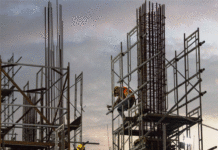Mr. Mayapada Kapri Sr. Manager – BIM REPL (Rudrabhishek Enterprises Ltd.)
It is estimated that by the year 2030,approximately 600 million Indians will be living in urban areas. The urban infrastructure in the country is already reeling under tremendous pressure. To keep up the pace with this rapid urbanisation and enhance the standard of living of the urban population, the government of India is developing 100 smart cities in country. The agencies, both government and private, are extensively making the use of modern information & communication technologies (ICT) along with geospatial data to make cities cleaner, safer, energy efficient, low carbon emitters and disaster resilient. In simpler words the government is trying to make the cities as much citizen and environment friendly as possible. Almost every possible means of modern technology is being implied to achieve this target. However, one aspect of smart cities that India might be lagging behind is the Building Information Modelling (BIM). Experts claim that it is almost impossible to build any real smart city without the application of BIM.
BIM (Building Information Modelling) is a process based solution to collaborative approach towards project coordination that is increasingly becoming indispensable for the AEC (Architecture, Engineering & Construction) industry. Fundamentally, it is a software driven process which provides the project delivery team with a Virtual 3D visualization of the look and feel of the building that is to be constructed along with additional information from conceptual stage to O&M of the infrastructure.
BIM modelling helps in better cost predictions and saving by preventing losses. Since there is a real time and continuous coordination between the stakeholders, BIM also helps in optimising designs, minimising errors and improved project timelines. It is also useful in estimation of the future of the project and maintenance requirements. Over all it would not be an overstatement to say the BIM can improve the overall design and construction efficiency of any project multi-folds and help to save time & cost.
BIM is not only useful for standalone buildings but it is also a significant element for building any smart city. As mentioned above, the dream of building a real smart city cannot be realised without BIM. Keeping in mind the needs, demands and aspirations of the new urban population, especially the millennials, the use of BIM is no longer an option but a necessity for the development of smart cities. The growing significance of BIM can be understood in the fact that the UK government in 2016 mandated the use of BIM for all publicly funded buildings. Countries like Germany and France are also utilizing the BIM in several infrastructure projects.
Efficiency and connectivity lie at the heart of any smart city. BIM helps design and build buildings and infrastructure compatible, complementary and connected to the existing infrastructure. It can help the urban planners visualise the design and functioning of any particular piece of infrastructure. This helps them plan and implement public transport systems, drainage, waste collection &management, ICT and other amenities around it. It also helps predict the resource consumption by the building and make necessary arrangements. BIM can also help the urban planners simulate conditions like natural disasters, epidemic or even terrorist attacks at the planning stage and take necessary precautions and keep provisions for better informed disaster response. The Covid-19 outbreak has placed disaster response preparation at the heart of urban planning.
India has been doing significant technological advancements in recent years. Infrastructure sector like many other sectors has seen revolutionary changes. Smart cities are rapidly investing in smart infrastructure for better functioning, save cost and reduce their environmental impact. Despite all these developments, India has slightly been lagging in the BIM adoption for its infrastructure projects and smart city planning. All the developed economies have adopted BIM as an integral part of their infrastructure planning and management. They have reaped great results due to the timely adoption of BIM. Although the usage of BIM in India has been on a constant rise, it needs to gain pace in order to match the ever-growing infrastructure requirements of the country. It is high time that India adopted BIM as a fundamental aspect of its infrastructure development and the government formulated a strong policy regarding its usage.
Corporate Comm India (CCI Newswire)




















